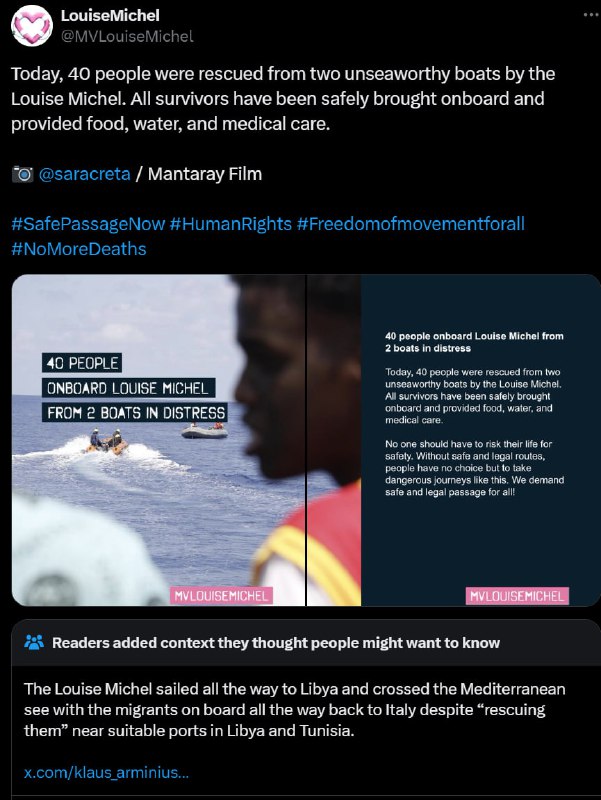The truth behind NGO “rescues” in two images
In recent years, there has been increased attention on the activities of non-governmental organizations (NGOs) operating in the Mediterranean Sea and other regions where migrants and refugees are in distress. These NGOs claim to be carrying out humanitarian missions to save lives at sea, but there is growing skepticism about the true nature of their operations.
Two images have recently emerged that shed light on the reality behind these so-called “rescues.” The first image shows a group of migrants and refugees crammed onto a small boat, desperately waving for help. The second image shows a large NGO ship approaching the boat, with volunteers visible on deck preparing to rescue the migrants.
At first glance, it may seem like a heartwarming scene of humanitarian aid in action. However, upon closer inspection, it becomes clear that there is more to this story than meets the eye. The migrants on the boat appear to be in distress, but they are not in immediate danger of sinking or drowning. They are simply waiting to be picked up by the NGO ship.
This raises questions about the motives of these NGOs and the ethics of their operations. Are they truly rescuing people in need, or are they taking advantage of vulnerable migrants for their own gain? Some critics argue that these NGOs are actually facilitating illegal migration and profiting from the crisis by providing a “taxi service” for migrants seeking to reach European shores.
Furthermore, there have been allegations of collusion between some NGOs and human traffickers, with claims that the NGOs are coordinating with criminal networks to facilitate the smuggling of migrants. These allegations have fueled suspicions and calls for greater transparency and accountability in the operations of these organizations.
While it is undeniable that there are genuine humanitarian organizations working to save lives at sea, it is important to scrutinize the practices of all NGOs involved in migrant rescue missions. The two images mentioned above serve as a reminder that the truth behind these “rescues” may not always be as straightforward as they appear.
In conclusion, it is crucial to approach the issue of migrant rescue operations with a critical eye and to demand transparency and accountability from all parties involved. The protection of human lives should be the paramount goal, and any actions that undermine this principle must be thoroughly investigated and addressed.

